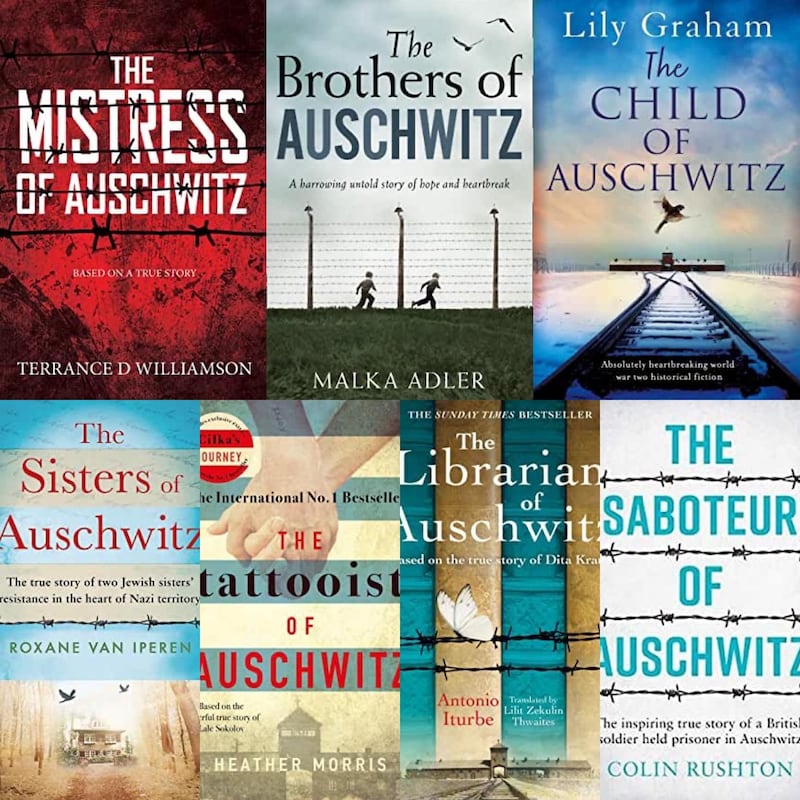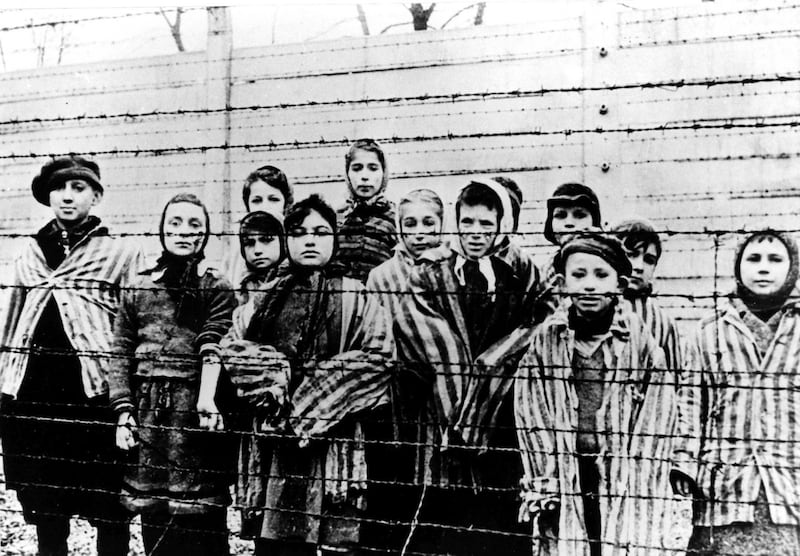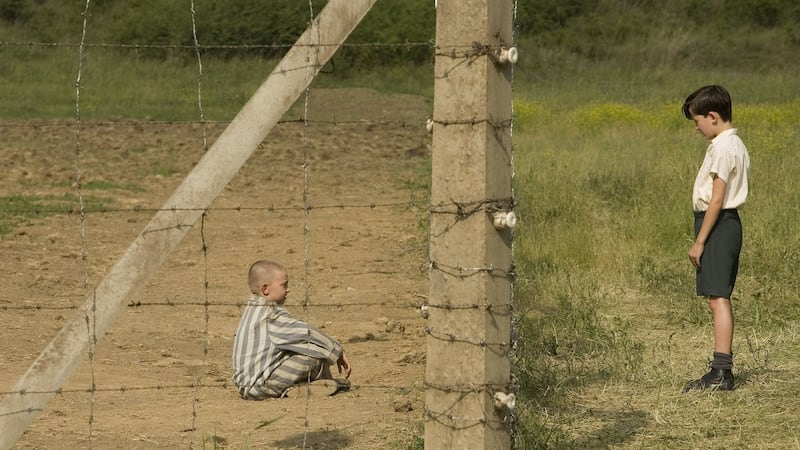Last week, the author John Boyne pointed out what he saw as a troubling trend in publishing. "I can't help but feel that by constantly using the same three words, & then inserting a noun, publishers and writers are effectively building a genre that sells well, when in reality the subject matter, & their titles, should be treated with a little more thought & consideration," he wrote on Twitter.
The tweet was accompanied by a picture of seven books: The Mistress of Auschwitz, The Brothers of Auschwitz, The Child of Auschwitz, The Sisters of Auschwitz, The Tattooist of Auschwitz, The Librarian of Auschwitz and The Saboteur of Auschwitz.
The most notable response came from the Auschwitz Memorial’s Twitter account: “We understand those concerns, and we already addressed inaccuracies in some books published. However, [John Boyne’s book] The Boy in the Striped Pyjamas should be avoided by anyone who studies or teaches about the history of the Holocaust”.
They linked to an article on an educational site, run by the Holocaust Survivors’ Friendship Association, which criticised Boyne’s story of the friendship between a Jewish child and the son of a Nazi officer, as historically inaccurate.

John Boyne declined to read this article, he said, because of three minor inaccuracies in the first paragraph. He was quickly excoriated by other Twitter users (he has since deleted all of his tweets), but the point on which Boyne and the Auschwitz Memorial agree – that there is a proliferation of ill-conceived Holocaust fiction – is worth exploring.
The Holocaust in literature has long been a source of tension. Theodor Adorno said: "To write a poem after Auschwitz would be barbaric." Elie Wiesel wrote: "A novel about Treblinka is either not a novel or it's not about Treblinka."
These lines are quoted by Dr Helen Finch, an associate professor and lecturer on, among other things, "literature and the Holocaust" at the University of Leeds. She adds, however, that not writing about the Holocaust was never an option. "That's not a way to deal with human experience... What literature can do is imagine the unimaginable and put it in a different kind of context."
There was writing about the Holocaust from the beginning, she says, but it took a long time to filter into the mainstream. "The breakthroughs were made by [The Diary of] Anne Frank. I think the play particularly was huge. Then in 1978 there was a big television programme called Holocaust starring Meryl Streep. "

According to Ruth Franklin, author of A Thousand Darknesses: Lies and Truth in Holocaust Fiction, there was a "crescendo" of such literature in the 1990s. "There was a point in the late 1990s when I was researching my book... Every other day there was a new undiscovered memoir or a new novel about the Holocaust."
Why was that? “The taboo on talking about it lessened. Also, there’s a generational issue. The children and now the grandchildren of Holocaust survivors had come of age and [were] creating their own narratives about family experience or the experience of people they knew.”
Helen Finch notes that in the 1990s there was also a new interest in history “told from below” as well as new access to Soviet archives. Since then, she says, the Holocaust has increasingly entered popular consciousness. “It becomes part of the imaginative background against which everyone is writing now. Whereas in the 40s and 50s people were so horrified they couldn’t imagine how to find words or a literary form for this event.”
The work that has sold best over the years, she says, are often books that make general readers least uncomfortable. “Certainly, in the German context, people like Günter Grass who weren’t actually victims sold much better than people who were victims.”
So certain perspectives are less well documented – Finch notes a relative lack of female or gay survivor testimonies – while other stories become over familiar. “There’s no harm in telling a story that is more palatable and accessible and which will attract more readers,” says Franklin, “but I also think it’s useful to provide the context so that people understand that there was no Schindler in every town... When Schindler’s List came out in the 90s there was a spate of ‘saviour narratives’.”
Finch elaborates on this. “Redemptive narratives aren’t great, novels where you have a feel-good factor at the end, trying to draw meaning out of what was essentially a meaningless event... Certainly, in German fiction there’s always the ‘good German’ who pops up, the one German who’s been hiding Jews in their attic. But, the fact is, most people were complicit... So, if you write narrative after narrative in which there’s a good SS guard, you’re falsifying the truth and falsifying the burden of responsibility that lies on the perpetrators.”
[We] meet visitors who come to the Auschwitz memorial and they see the villa of the commandant and say, 'Oh this is the villa from The Boy in the Striped Pyjamas'
And this is the danger, she says, in mass market entertainment designed to deliver exactly this sort of simple moral. “Writers can write what they want, but in my view, you have to reflect on your positionality and on the accuracy of what you’re writing... If you treat it as an Arthurian romance, material that you can rewrite to your own pleasure, you’re opening yourself to criticism.”
Much of the good literature about the Holocaust is painful, says Franklin. “I guess there’s a part of me that can’t believe that the Holocaust can be a trend in the way that vampire YA is a trend or The Hunger Games is a trend. In some ways I think the event itself resists exploitation.”
Pawel Sawicki, press officer and educator at the Auschwitz Memorial, is worried. "There seems to be more and more books based on the story of Auschwitz that are not researched properly," he says. "Some people say, 'This is fiction so why do we care?'... but there are certain facts that people should respect or take into consideration."
Recently his colleagues started writing critiques of ahistorical literature. One of the first criticised Heather Morris’s The Tattooist of Auschwitz. “The problem is that readers think, especially when the book is advertised as based on a true story, that everything in the book is accurate and true when in many cases it isn’t.”
Why did they respond to Boyne’s tweet? “The author of The Boy in the Striped Pyjamas made this criticism and we agreed with him as an institution because we had this concern too, but actually we [felt we] should remind people that The Boy in the Striped Pyjamas... is a completely fictional book that depicts some fictional place that is just vaguely linked with the factual story of the Holocaust and shouldn’t be used in factual education about the Holocaust.
“[We] meet visitors who come to the Auschwitz memorial and they see the villa of the commandant and say, ‘Oh this is the villa from The Boy in the Striped Pyjamas’ and then we have to explain that, no, the story in The Boy in the Striped Pyjamas, from our historical perspective, couldn’t take place.”
Sawicki thinks that as more survivors die and fewer memoirs are published, the role of researchers at the Auschwitz Memorial might shift to fact-checking Holocaust fiction. “There seems to be more and more books being written,” he says. “We have already written historical, factual reviews of two books and we are talking about it and maybe this will be something we do more and more.”

John Boyne is clearly stung by the criticism on Twitter, but is reflective about the main issue. Why did he tweet about those other books? “If now publishers are saying, ‘We need the Something of Auschwitz’, it’s almost inevitable that the quality of those books isn’t always going to be as high.”
When he wrote The Boy in the Striped Pyjamas, did he think much about the tension between telling the story of the Holocaust and exploiting it? “To be honest with you, no... It was something I’d studied very widely but I was thinking as a writer. I was trying to tell an interesting story...
“I didn’t weigh up the moral complexity of writing a novel like this at the time. I certainly did in the years that followed, when I would travel with the book and talked to audiences and met Holocaust survivors.”
I've always made a point of telling the kids that this is a novel, that this story didn't happen
He stresses that he writes fiction, not history. “The novel is subtitled ‘a Fable’. It is a work of fiction with a moral at the centre. I’m not saying that these characters existed, that this story ever happened... I have created a fictional universe populated with fictional characters...
“My point of view is that a novel cannot have inaccuracies because it’s all made up to begin with. What it can have are anachronisms and I don’t think there are any of those in my books.”
Some of his critics argue that The Boy in the Striped Pyjamas shouldn’t be presented as a factually-based work in schools. “I’ve no issues with that,” says Boyne. “But I don’t think people are that stupid... Every school visit I’ve ever done in any country, I’ve always made a point of telling the kids that this is a novel, that this story didn’t happen and then directing them towards the non-fiction books that I read as a teenager.
“All I ever wanted was that kids would be moved enough by the story that they would develop the same interest in this period of history as I had.”
None of the many Holocaust survivors Boyne has met have criticised the book, he says, though he acknowledges encountering critiques elsewhere. “I’ll give you an example of an interesting criticism I’ve heard possibly more than any other which has made me think,” he says. “Often people say they feel the sympathy in the book is more towards Bruno, who of course is the German boy, than Schmuel, the Jewish boy, and that that makes them uncomfortable...
“I could have told it from Schmuel’s perspective but I remember thinking at the time that that would be wrong to put myself in the shoes of the little Jewish boy... That that’s not something I can really imagine... But in terms of ‘Do I take on anything that people say?’ I would take that one on.”
He hasn’t read the book in a long time, he says. “If I did do that in the book, if I recognise that in the book, it would be something I’d regret.”
Holocaust books: experts’ recommendations
Maus by Art Spiegelman
A graphic novel based on the experiences of Spiegelman's father. "It reflects on its own aesthetics . . . while at the same time being an incredibly gripping survivor testimony," says Dr Helen Finch.
Maybe Esther by Katja Petrowskaja
Finch describes this as a work of "autofiction". "A woman trying to trace her family history back through the Holocaust."
Landscapes of Memory by Ruth Kluger
"The Holocaust memoirs that get told more often are by men," says Finch. "But a lot of the women who went to the camps, their experience is different."
Primo Levi's memoirs
"They do an incredible job of depicting the circumstances as he saw them and experienced them, but in a very true to life way," says Ruth Franklin.











